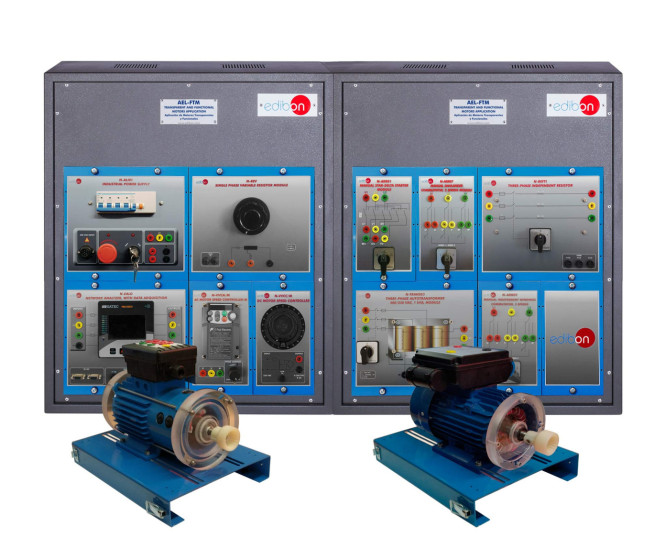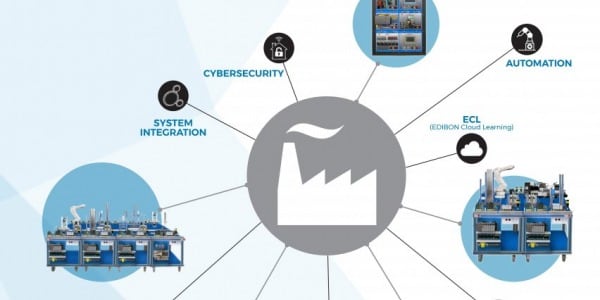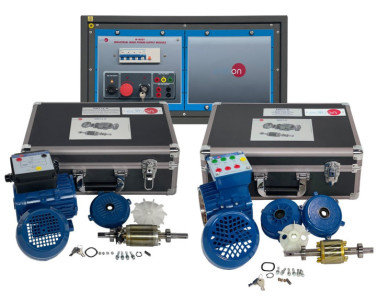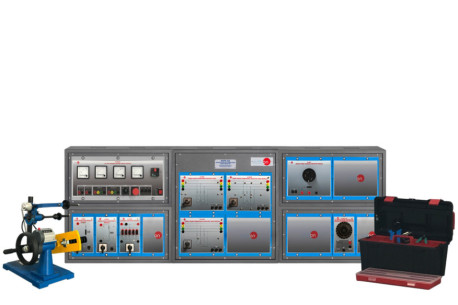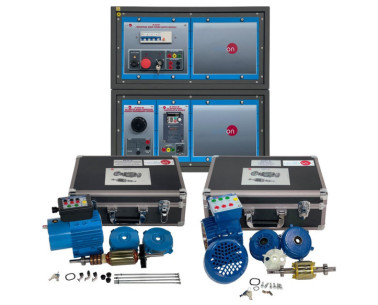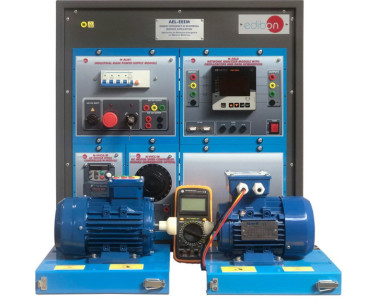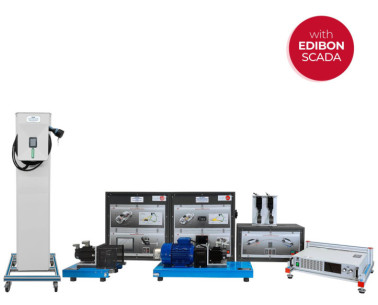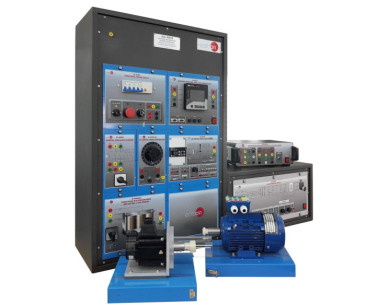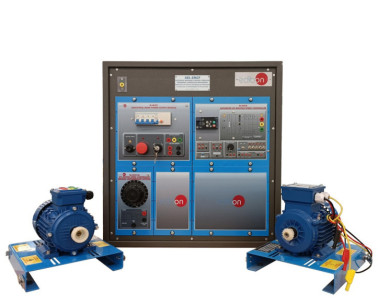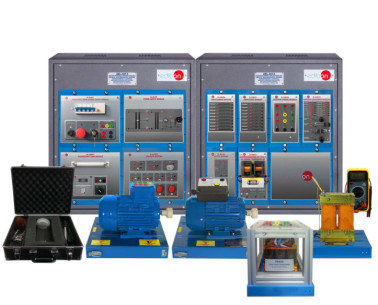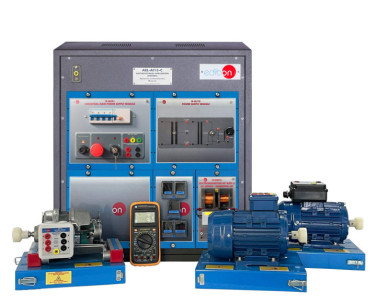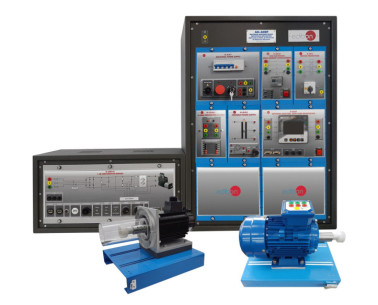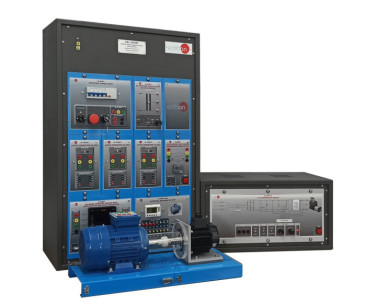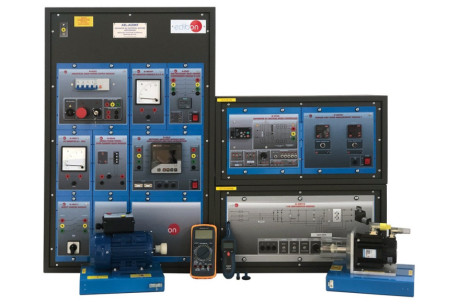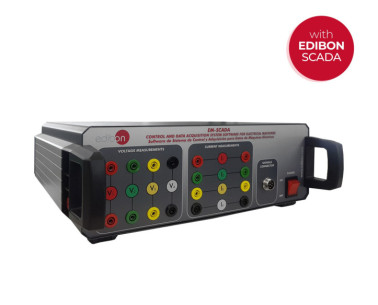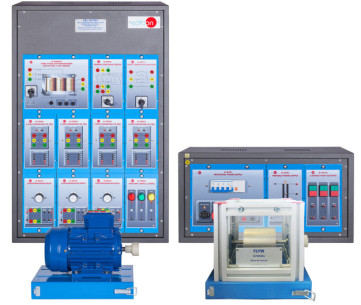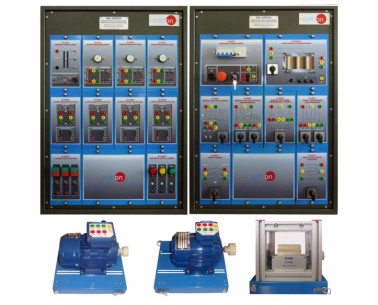The Transparent and Functional Motors Application "AEL-FTM" has been designed by EDIBON for the formation at theoretical-practical and functional levels about the electric rotating machines.
This application offers several study options which will provide the user of the knowledge, at a functional level, of the electric motors. For this purpose, the application includes a specific manual explaining, at theoretical level, the relative aspects to the electric machines. The theme covers from the parts that form different types of electric machines to how their operations are. Furthermore, a set of both optional transparent motors and modules are provided for the study of the same from a practical point of view.
The "AEL-FTM" application offers a series of requered electric transparent motors: DC Independent Excitation Motor-Generator, DC Series Excitation Motor-Generator, DC Shunt Excitation Motor-Generator, DC Compound Excitation Motor-Generator, DC Serie/Shunt/ Compound Excitation Motor-Generator, Independent Excitation 3PH Synchronous Motor-Generator, 3PH Squirrel-Cage Industrial Motor, 3PH Wound Motor Study Kit, Dahlander Motor, 2 speeds, 3PH Squirrel-Cage Motor, 2 speeds, Universal Motor, DC Permanent Magnet Motor, 1PH Squirrel-Cage Motor with Starting Capacitor, 1PH Squirrel-Cage Motor with split phase, 3PH Reluctance Motor, 1PH Squirrel- Cage Motor with Starting Capacitor, 1PH Squirrel-Cage Motor with Starting and Running Capacitor and 1PH Shaded Pole Motor.
In addition, a set of modules are recommended with each electric machine in order to put into operation each one. Besides, it is possible to visualize in dynamic regime the inside of each transparent motor through the stroboscope.
One of the advantages of this application is that is included a stroboscope to visualize the rotor in operation. This technique is employed frequently in the industry to calibrate or repair the unit. In addition, with the modules which are offered in each option, can be done speed regulation tests and in some cases to study the drop voltage produced by the loads.
 Настройки cookie
Настройки cookie

